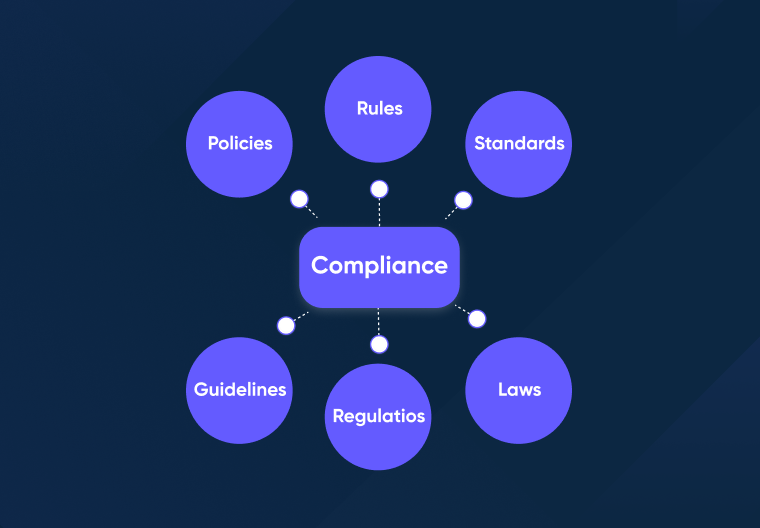
Biometric AML Present Conditions and Future Considerations
Current AML practices in a highly advanced financial landscape are changing with the need of the hour, but they still face significant challenges. Traditionally AML methods have majorly relied on manual checks. Manual checks involve practices that are redundant and hence cause delays and errors which are time-consuming and subject to human error. In the traditional methods, very limited search fields are used for the identification of suspicious activities, which can miss an individual due to false positives or negatives. Additionally, the handling of fuzzy logic in name matching, which can either result in too many false positives or miss an individual of interest is yet another conundrum. Transliteration, the process of converting text from one script to another, causes further complications, as it can lead to inconsistencies in how names and other critical information are recorded and recognized.
Keeping in view the aforementioned persistent problems and challenges in the traditional AML strategies, biometric screening presents itself as a potential revolution in AML practices which is making the work of MLROs easy. Face biometric screening technology, which reads and analyzes individuals based on their facial features, offers a more accurate and reliable way of searching and screening the individuals in watchlists. This technology further increases the efficiency of the AML process because the manual procedures are reduced to zero and it does so by overcoming the limitations that are often accompanied in the traditional text-based searches. Interestingly enough, despite its potential and how easy it has made work for MLROs, the incorporation and hence utilization of face biometrics into AML practices remains largely untapped. This offers an opportunity for innovation in this field, as face biometrics screening could provide a more advanced yet easy and reliable way out in preventing money laundering in the financial sector.
Real-World Applications and Case Studies
Financial Institutions Under Scrutiny:
To understand how inefficient traditional AML particles are, a deeper look at the case studies would better help in understanding. The financial institutions faced severe consequences due to inadequate AML screening. This is best represented by the HSBC case where in 2012, the bank was fined $1.9 billion by U.S. regulatory bodies for inadequate and inefficient AML controls in place. Such measures enabled Iran (which is under sanction as per US law) and drug traffickers to move money through the U.S. financial system. Talking about banks, in 2020 some files were leaked by FinCEN which exposed that due to inefficiencies and weaknesses in the AML practices, even the biggest and renowned banks became the targets of criminals to launder money.
Operational and Reputational Risks:
Inefficient AML screening is the direct cause of operational and procedural risks which means that the system of an organization or a financial institution can become overloaded due to high volumes of false positives. This leads to the diversion of resources from genuine cases. Additionally, apart from the operational risks, reputational damages constitute long-term damages. When it was exposed that the Estonian branch of Danske Bank was involved in a case of money laundering, it was a huge blow to the reputation of a greatly renowned bank. The fraud involved €200 billion which was transacted between 2007 and 2015, without the knowledge of the authorized and relevant parties. This scandal not only led to the resignation of its CEO but also caused a substantial loss of customer trust and a drop in market value.
Costs of Non-Compliance:
The financial and regulatory costs associated with noncompliance are amongst other repercussions. Institutions have to undergo constant and increased regulatory scrutiny apart from mere fines and legal fees. Such measures demand expensive overhauls of AML systems. To illustrate this, Deutsche Bank has faced excessive fines multiple times because of poor AML practices. Additionally, it faced a fine of $630 million in 2017 for a Russian money-laundering scheme. This represents that a huge sum of money is spent not just directly because of non-compliance but also as a result of increased regulatory oversight and scrutiny.
Comparative Analysis with Face Biometric Screening
Mitigating Risks:
The use of face biometric screening to match customer images (especially those who are being onboarded for the first time) with those on watchlists can significantly mitigate the risk of money laundering. As illustrated by the Danske Bank scandal (explained above) this technology could have played a crucial role and would have avoided the damage. If a customer’s face had been screened and matched against global watchlists, the bank might have been able to identify suspicious individuals upfront. This is also emphasized by FATF that accurate identity verification is key to preventing money laundering, and face biometric screening (although does not verify identities), but helps in searching and identification of high-risk individuals.
Efficiency Enhancement:
Face biometric screening can significantly enhance the efficiency of AML processes. In the case of Standard Chartered which had to pay the penalty of $1.1 billion in 2019 for AML breaches, could have benefited from this advanced, yet fairly easy-to-use technology for MLROs and could have saved itself from paying such hefty fines. This is attributed to the speed and accuracy of biometric screening which can reduce the time spent on manual verifications and at times investigations done on the wrongly identified person on whom the resources are simply wasted. According to extensive research conducted by the Journal of Financial Regulation, automated systems like biometric screening can enhance compliance efficiency (hence saving financial institutions and other organizations from huge penalties) by quickly identifying high-risk customers, thus allowing financial institutions to focus their efforts more effectively.
Preventive Measures:
Another perspective is how face biometric screening can even be used as a preventative tool. To best represent this, consider the case of BNP Paribas. The entity because it violated US sanctions faced a huge fine of $8.9 billion in 2014. Since biometric screening makes the process of screening through the watchlists more accurate and efficient, individuals or entities on sanction lists could have been more readily identified through their facial features, ultimately preventing the violation of sanctions that led to these heavy fines.
Compliance, Privacy, and Ethical Considerations
In addressing global AML standards, the integration of biometric screening may slightly give rise to privacy and ethical concerns. Since taking such security measures requires the use of personal data, a right balance must be there to ensure that neither the security nor the privacy of individuals is undermined. To ensure this is done, data protection measures like strict adherence to privacy laws like GDPR must be done. Following this law means that there is an adherence to transparency and consent in data usage.
Wrapping up
It is interesting to note how AML practices have evolved with time, marking a gradual change from manual methods, with high risk of errors, to advanced solutions like face biometric screening, which offers a more accurate and efficient way of searching and screening the individual of interest. This technology has repeatedly proven itself to address challenges (which are paint points in the AML industry) such as fuzzy logic and data inconsistencies. This is also signified by important cases of very renowned financial institutions like HSBC and Danske Bank, where weaknesses in AML controls did not only lead to significant fines (which the companies want to hedge themselves from) but also long-term reputational damages. Biometric screening, as offered by AML Watcher, enhances AML efficiency and risk mitigation while ensuring that accuracy in results is never compromised.
We are here to consult you
Switch to AML Watcher today and reduce your current AML cost by 50% - no questions asked.
- Find right product and pricing for your business
- Get your current solution provider audit & minimise your changeover risk
- Gain expert insights with quick response time to your queries




